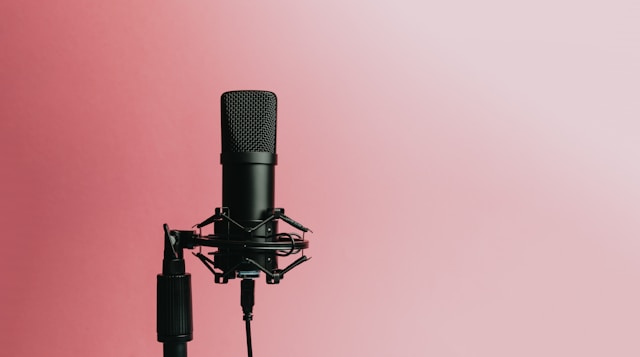
Begin by helping students understand why the ear is a powerful gateway to the mind. Unlike video, audio journalism forces the audience to build pictures internally, lighting up the brain’s visuospatial and emotional circuits. That mental co‑production boosts recall and empathy, two pillars of deep engagement. When a trusted voice delivers facts through earbuds, it slips past visual biases that trigger scepticism. The educational takeaway is clear: if you want learners to retain complex material, say, the timeline of a diplomatic crisis, deliver it in sound and print. At a time when only 31 percent of U.S. adults express confidence in traditional mass media, your newsroom’s credibility gains real value when it flows through the intimate channel of voice.
Trust Metrics That Highlight Audio’s Advantage
Next, walk students through the data. Across 20 countries, just over a third of adults (35 percent) now tune in to a podcast each month, and 13 percent choose shows that focus specifically on news. In the United States, Pew Research finds that roughly half of adults listened to at least one podcast last year, a figure that climbs steadily among 18‑ to 34‑year‑olds. Why should this matter to your trainees? Because an audience that chooses to listen is already primed for sustained attention. The 2024 Podnews Marketing Trust survey reports that 42 percent of Americans “trust or somewhat trust” information they hear on podcasts, 11 points higher than those who trust newspapers or television. More striking still, 56 percent say a host’s endorsement directly shapes their purchasing decisions. These statistics illustrate a core lesson: building recognizable, credible voices is not a cosmetic exercise but fundamental to persuasive, sustainable journalism.
Practical Techniques to Foster Engagement
With the theory in place, shift to applied skills, your cohort can test this week:
- Design for micro‑moments. Most people listen while commuting, exercising, or doing household chores. Offer 10‑minute “news primers” alongside longer investigations so learners can serve several use‑cases without diluting quality.
- Create a sonic logo. A short jingle, a consistent sign‑off, and a warm vocal portrait act as an auditory masthead, ensuring quick brand recognition on smart‑speaker shuffle. Nearly one‑fifth of all U.K. radio listening now happens on smart speakers—a 22 percent year‑on‑year jump—so that logo matters.
- Layer transcripts for SEO. Search engines cannot index sound. Posting time‑stamped transcripts with bolded keywords, such as audio journalism, turns every episode into evergreen, searchable text.
- Let analytics guide refinement. Completion‑rate graphs show where listeners drop off; if the curve plunges at minute seven, tighten your cold open or move sponsor reads.
- Guard host integrity. Teach emerging reporters to vet advertisers. A climate‑policy podcast that accepts a petrochemical sponsor may spike short‑term revenue but erode the trust that podcasting is known for.
Real‑World Case Studies You Can Learn From
Students absorb lessons faster when theory meets evidence. Point to the U.K.’s Times Radio, which combined interactive listener call‑ins with explainers during the 2024 election cycle and saw weekly reach rise 16 percent to 557,000. Have the class dissect one of those segments: How did the presenter invite participation? Where did they pause to let callers shape the agenda? Similar participatory formats shine beyond politics. An analysis of newsroom engagement tactics found that live Q&As on social platforms and voice‑note hotlines spike listener loyalty, chiefly because they reposition journalism as a conversation rather than a lecture.
Another example worth assigning is the adoption of brief, geo‑targeted explainers by public‑service stations during natural disasters. When Mumbai journalists used pop‑up audio streams to answer residents’ flooding questions in real time, completion rates topped 90 percent, far higher than companion blog posts. Challenge learners to prototype a two‑minute “hyper‑local” bulletin for the next weather emergency in their city. What data, ambient sound, and plain‑language cues make the piece both authoritative and comforting?
Crafting an Ethical, Future‑Ready Audio Strategy
Close the lesson by looking ahead. Voice cloning and AI translation allow one reporter to publish episodes in multiple languages. Yet the Reuters Institute finds audiences remain cautious: only one‑in‑five users say they are comfortable with AI‑generated news unless a human editor is in the loop. Equip students with a transparency checklist: always label machine‑generated segments, provide a link to the original script, and invite corrections. Such small disclosures sustain the trust premium that audio journalism enjoys.
Finally, emphasis should be placed on the fact that technology should serve citizenship. All the smart‑speaker statistics, host‑read ads, and listener hotlines ultimately point toward one goal: rebuilding the public square. When learners leave your classroom—or your newsroom internship—they should not merely know how to cut tape; they should understand why thoughtful sound design, participatory formats, and ethical sponsorships knit audiences back into the fabric of reliable information. Achieve that, and you will see the bond that begins in a pair of earbuds grow into civic action, from higher voter turnout to a crowdfunded investigative series.
Audio journalism succeeds when it teaches, includes, and respects its listeners. Equip your students with the science, the metrics, and the hands‑on skills outlined here, and they will be ready to create sound stories that do more than inform—they will connect, empower, and endure.